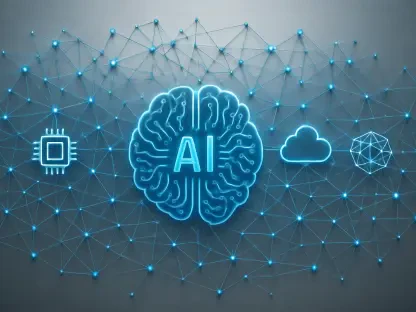The data center industry is at a pivotal moment, with rapid advancements in technology, dwindling vacancy rates, and increasing cyber threats shaping its future. As demand continues to surge, data centers must navigate a complex landscape to stay ahead. Here’s an in-depth look at the key challenges and opportunities facing the industry today.
Major Acquisitions and Industry Moves
AMD’s Strategic Push with ZT Systems Acquisition
AMD, a major player in the silicon industry, has announced a significant move to acquire ZT Systems for $4.9 billion. This acquisition aims to bolster AMD’s capabilities in AI data center infrastructure, positioning it as a fierce competitor to Nvidia. Dr. Lisa Su, AMD’s CEO, emphasizes the importance of this acquisition in enhancing systems design and customer enablement.
By integrating ZT Systems’ expertise, AMD aims to distance itself further from rivals like Intel, which has faced significant financial challenges recently. The acquisition reflects a broader industry trend where leading companies are consolidating to enhance their technological prowess and market standing. This trend is particularly pronounced in the AI and data center infrastructure sectors, where the stakes are high and the competition is fierce. For AMD, this move is not just about enhancing its technological capabilities but also about strategically positioning itself as a leader in the next generation of data center solutions.
The Impact of Microchip Technology’s Cyberattack
In a stark reminder of the vulnerabilities in the data center landscape, Microchip Technology Inc. experienced a cyberattack that disrupted operations. The attack hindered manufacturing capabilities, highlighting the critical need for robust cybersecurity measures. As data centers become more integral to infrastructure, safeguarding against cyber threats becomes ever more crucial.
This incident underscores the potential operational disruptions that such attacks can cause and emphasizes the importance of resilience and rapid response strategies. Companies must prioritize cybersecurity to maintain operational integrity and protect sensitive data. The attack on Microchip Technology is a poignant reminder that even industry leaders are not immune to cyber threats. Ensuring robust cybersecurity frameworks can mitigate the risk and impact of such incidents, helping to maintain business continuity and protect the company’s reputation and assets.
Market Trends and Vacancy Rates
Declining Vacancy Rates in Key Markets
Recent data from CBRE reveals a significant decline in vacancy rates across major data center markets in North America and Europe. In the U.S., vacancy rates have plummeted to a historic low of 2.8%, driven by surging demand for data center space. Similarly, European markets like Frankfurt, London, Amsterdam, Paris, and Dublin are experiencing vacancies below 10%.
This trend indicates a robust demand that exceeds current supply, leading to increased leasing costs and challenges in securing necessary resources. The scarcity of land and power further complicates efforts to expand and meet growing needs. The implications of this trend are profound, as developers and operators scramble to secure the resources needed to build new facilities and upgrade existing ones. Higher land prices and limited access to power are driving up costs, while the relentless pace of technological advancement requires constant investment in new infrastructure.
The Consequences of Low Vacancies
The decline in vacancy rates has had ripple effects across the industry. Higher leasing costs are putting pressure on companies to optimize space usage and seek innovative solutions. The competition for suitable locations has intensified, forcing companies to think strategically about their expansion plans. This situation presents both challenges and opportunities. While companies must navigate higher costs and resource scarcity, there is potential for innovation in how data centers are designed, built, and operated to maximize efficiency and performance.
Data centers must explore new technologies and strategies to make better use of available space and resources. From modular designs to more efficient cooling systems, innovative approaches can help mitigate the impact of rising costs and resource constraints. Additionally, partnerships and collaborations with local authorities and utility providers can play a crucial role in securing the necessary infrastructure and support for new developments.
Cooling Innovations and Energy Efficiency
The Promise of Metal Foam-Based Cooling Solutions
A Swiss startup, Apheros, is making waves with its innovative metal foam-based cooling solutions. The company recently secured $1.8 million in pre-seed funding to further develop this technology, which offers superior heat exchange and fluid transport properties. This innovation addresses the inefficiencies in current cooling methods, which are increasingly strained by the energy demands of AI workloads.
The metal foam cooling technology promises substantial energy reductions and cost savings, potentially revolutionizing how data centers manage their thermal environments. As AI and other high-performance applications drive up energy consumption, efficient cooling solutions become critical. This breakthrough could help data centers significantly reduce their environmental footprint while also cutting operational costs. As companies increasingly focus on sustainability and energy efficiency, innovations like this could become a cornerstone of future data center design and operation.
Addressing the Energy Efficiency Challenge
The growing energy consumption of data centers, particularly those handling AI workloads, necessitates advancements in cooling technologies. Traditional cooling methods are often insufficient or cost-prohibitive, making innovations like metal foam-based solutions particularly appealing. By improving energy efficiency, data centers can reduce operational costs and minimize their environmental impact.
This is increasingly important as regulatory pressures and sustainability goals drive the industry toward greener practices. Companies that invest in innovative cooling solutions not only benefit from reduced energy costs but also enhance their reputation as leaders in sustainability. As the demand for data centers continues to grow, the importance of energy-efficient cooling technologies will only increase, making it a critical area for ongoing research and development.
Construction Costs and Financing Strategies
The High Costs of Data Center Construction
Building a new data center is a capital-intensive endeavor, with construction costs varying widely based on location. In 2023, the cost per megawatt ranged from $6.4 million in Mumbai to $13.7 million in Tokyo. These figures highlight the significant financial commitment required to expand data center capacity. Understanding the factors driving these costs is crucial for stakeholders planning new projects. Factors such as land availability, labor costs, and regulatory requirements all play a role in determining the overall expense of construction.
Navigating the high costs of data center construction requires a strategic approach to project planning and execution. Stakeholders must consider not only the immediate costs but also the long-term implications of their investment decisions. Balancing the need for advanced technology and robust infrastructure with budget constraints is a complex challenge that demands careful analysis and expert insight.
Financing Options for Data Center Projects
Given the high costs, securing appropriate financing is essential for the successful development of data center projects. Options include both debt and equity financing, each with distinct advantages and considerations. Debt financing may offer lower costs of capital, while equity financing can provide greater flexibility. Choosing the right financing strategy involves assessing the specific needs of the project, market conditions, and long-term scalability plans.
A nuanced approach to financing can help data center operators manage costs and ensure sustainable growth. Understanding the various financing mechanisms and their implications is key to making informed decisions. Collaborating with financial experts and leveraging industry knowledge can provide valuable insights into the best financing options for a given project. Additionally, innovative financing models and public-private partnerships may offer alternative pathways to funding large-scale data center developments.
Navigating Cybersecurity Threats
The Evolving Landscape of Cyber Threats
Data centers are increasingly targets for cyberattacks. Ensuring robust cybersecurity frameworks is not only paramount for safeguarding sensitive information but also for maintaining operational resilience and business continuity. The cyberattack on Microchip Technology Inc. highlighted the vulnerabilities present in modern data center infrastructure and the devastating impact such breaches can have.
Cybersecurity threats are constantly evolving, and data center operators must stay one step ahead to protect their assets and customers. Implementing advanced security measures, continuous monitoring, and rapid response protocols are essential components of a comprehensive cybersecurity strategy. As data centers become more integral to business operations and critical infrastructure, the stakes for maintaining robust security have never been higher.
Building a Robust Cybersecurity Framework
The data center industry is currently at a critical juncture, driven by swift technological advancements, shrinking vacancy rates, and rising cyber threats. These factors are rapidly reshaping the future of data centers. With demand showing no signs of slowing down, the industry faces a labyrinth of challenges and opportunities that must be navigated carefully.
One of the foremost challenges is keeping pace with technological progress. The industry must continuously innovate to remain competitive, integrating cutting-edge solutions like artificial intelligence, machine learning, and automation. These technologies not only enhance operational efficiency but also help to mitigate risks and improve uptime.
Vacancy rates in data centers are also hitting historic lows. As companies race to secure space for their growing data needs, the industry must find ways to optimize existing infrastructure and develop new facilities quickly. This often involves balancing sustainability with scalability, ensuring that new builds are both environmentally friendly and capable of meeting rising demand.
Cybersecurity is another significant concern. The evolving nature of cyber threats requires data centers to adopt robust and adaptive security measures. This includes everything from physical security enhancements to advanced cybersecurity protocols designed to protect against data breaches and cyber attacks.
In summary, the data center industry is facing a period of rapid transformation. By addressing these key challenges and seizing new opportunities, data centers can ensure they remain at the forefront of this ever-evolving field.









